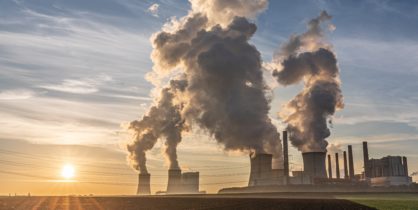CBAM: Delineating the Hydrogen Horizon
In the global energy transition, hydrogen is emerging as a key player, igniting discussions on export-import dynamics and the Carbon Border Adjustment Mechanism (CBAM).
An in-depth feature by REVOLVE delves into the CBAM, exploring its definition, its potential global trade impacts, the hurdles it faces, and its broader global consequences. Diving into the challenges and solutions, Suzan Naz Uzel from REVOLVE, spoke with Max Gruenig and Domien Vangenechten, Senior Policy Advisors at E3G.
Max Gruenig, a prominent voice in the energy discourse at E3G, sheds light on the growing interest in hydrogen export from the United States and Europe’s import strategies. Notably, the discussion is not confined to the technicalities of hydrogen; it extends to the intricacies of policy, subsidies, and the nuanced perspectives of different nations.
While the EU views the CBAM as a domestic policy, the rest of the world perceives it as a trade policy and seeks negotiation and discussion.
Max Gruenig
Gruenig describes the landscape of hydrogen export, unraveling the intricate web of plans and challenges. While the U.S. government’s $7 billion subsidies, termed regional ‘hydrogen hubs,’ promise a concentrated surge in hydrogen generation capacity domestically, concerns arise about the potential windfall profits and the repercussions on global hydrogen investments. He touches upon the delicate balance required to foster a global hydrogen economy without inadvertently stifling opportunities elsewhere.
The imminent threat of neo-protectionism adds complexity, as the CBAM’s aim to equalize conditions could be misinterpreted as a safeguard for EU industries.
Domien Vangenechten
Domien Vangenechten steps into the ring to dissect the CBAM from the European Union’s perspective. He emphasizes that, from the EU’s standpoint, CBAM is an extension of domestic climate policy rather than a trade barrier. Yet, he acknowledges the divergence in perception, highlighting the challenge of conveying CBAM’s true intent to third countries. The looming specter of neo-protectionism complicates matters, as CBAM’s equalizing mission may be misconstrued as a protective shield for EU industries.
CBAM is first and foremost a climate policy.
Domien Vangenechten
Gruenig spotlights an argument often overlooked – the perspective of middle and developing countries in emerging markets. These nations contend that the EU, with its historical carbon emissions, imposes expectations that hinder their development paths. He suggests a recalibration of demands, urging the EU to be more accommodating and less stringent in its aspirations for global carbon parity.
Vangenechten advocates for a holistic approach in addressing the concerns surrounding CBAM. He contends that CBAM alone is insufficient, emphasizing the need for a comprehensive strategy that includes capacity building, financial support, strategic partnerships, and trans-national cooperation. This more holistic approach, he argues, is crucial to assuage the fears of partner countries grappling with the implementation of substantial domestic measures by the EU.
CBAM alone is insufficient, a comprehensive strategy that includes capacity building, financial support, strategic partnerships, and trans-national cooperation is needed.
Domien Vangenechten
Gruenig and Vangenechten converge on a shared vision – the imperative to scale-up renewable energy sources for clean hydrogen production. To make good on the promises presented by clean hydrogen to help tackle climate change, they highlight the challenges posed by scaling such an electricity-dependent product, underscoring the need for accelerating the roll-out of renewable energy while directly electrifying processes over using hydrogen where possible.
As the hydrogen horizon opens, the insights from Max Gruenig and Domien Vangenechten echo the complexities and potential pitfalls of current strategies. The key lies in finding a delicate balance between national interests, global collaboration, and understanding diverse perspectives. In this dance of policy, perception, and power, the path to a sustainable hydrogen future demands not only technical innovation but diplomatic finesse and inclusive cooperation.



